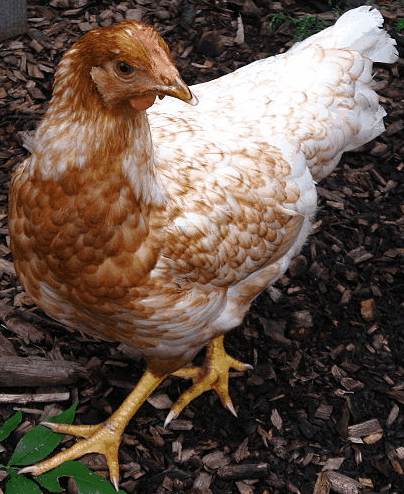Red sex linked chicken can be ‘sexed’ straight after hatching. ‘Sexing’ is the term used to determine whether chicks are female or male. This is an advantage over other breeds where it isn’t possible to determine the sex of the chicks for up to several weeks after hatch. It works like this, if you know you have females, you know you have chickens that will lay eggs.
Red sex link is a term used to describe a chicken that isn’t a pure breed of chicken, you cannot produce a red sex link by crossing two sex links with each other. This ‘hybrid breed’ was created by crossing two pure breeds Rhode Island Red male and either white Plymouth Rock a female or a Rhode Island White female.
As sex links are not their own breed and are created by selective breeding, they are not recognized by the American Poultry Association.
They are quite often called by other names. These included but are not limited too, Golden Comets, Gold Star, Gold Sex Link, Hybrids, Red Star, Bovan Brown, Isa Brown….
Eggs
Size
Large
Color
Light Brown – Brown
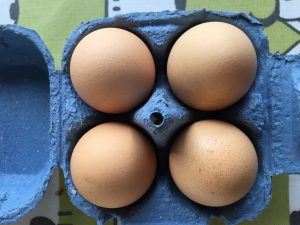
Production per year
250-300+ per annum. In their first year mine have laid 300. With a very hot summer, another year mine laid 220 eggs.
When do they start laying eggs?
As early as 16 weeks
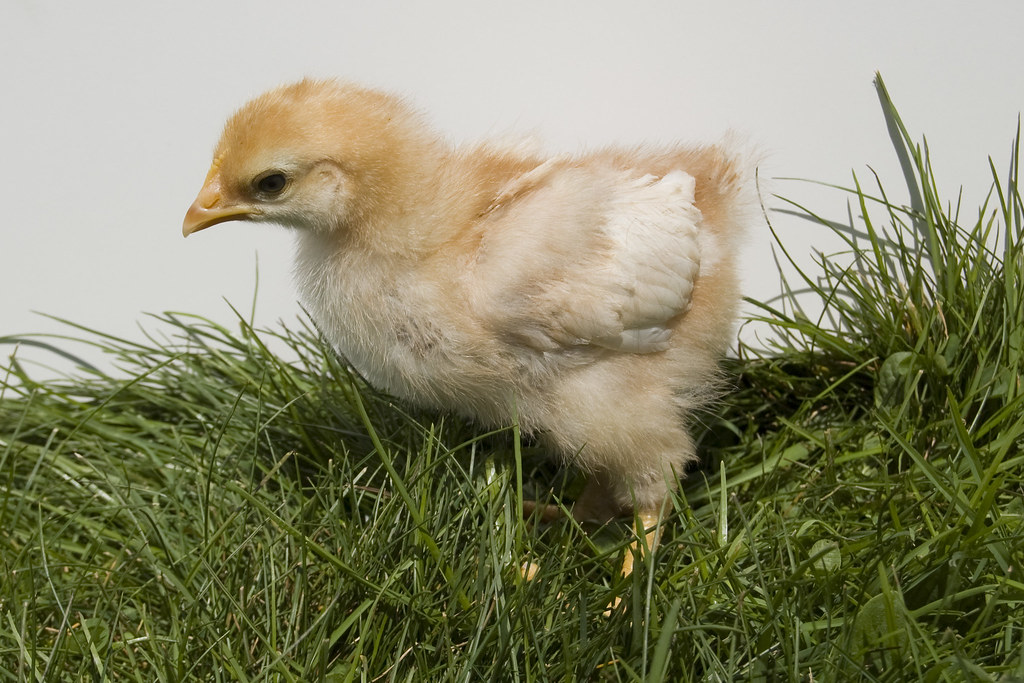
Red Sex Link Characteristi
Temperament / Are they good as pets?
They are so friendly and make fantastic pets. They very sadly they don’t have a very long life expectancy. At best 3 years. I have known this work in the favour of many pet owners as children grow up and interests change etc. It will be a great few years though, they are very very friendly and will enjoy cuddles and being petted. The red sex link chicken is an amazing layer of eggs and is child friendly. It’s a win win.
How do I tame “Sex link” chickens?
No need. They are so tame, from chicks they will be easy to handle and pick up. Even as adults they are naturally inquisitive so will come over and probably eat from your hand straight away. Mine did. If they don’t, tempt them over with some treats. Works every time.
How many do I need to buy?
I never recommend buying singularly. I always recommend buying in pairs. Even if you have an existing flock. Buying a minimum of two mean the integration process, into an existing flock, is much easier for them. If you have no other chickens, then I still recommend buying red sex link chickens in pairs. This is because chickens are social creatures and enjoy spending time with other chickens. You won’t want them to be lonely.
A great small backyard flock size is 6. You can always grow it from there if you want too but 6 is a great starting number. The ratio for females to males is 10:1. That means 10 females to every one male.
How much space do they need?
They will require a minimum of 10 sqft per bird of outside space. They are an active bird that will enjoy foraging. 10sqft per bird is a minimum they will be happier the more space they have.
Will they mix with my other chickens?
Yes. They will mix well, on the rare occasion they will be a bit bossy to the others but very rarely fight. With that said, they are a hybrid chicken, so ask wherever you are buying them from what the temperament of the parents was like. Aggression can be passed down to the chicks.
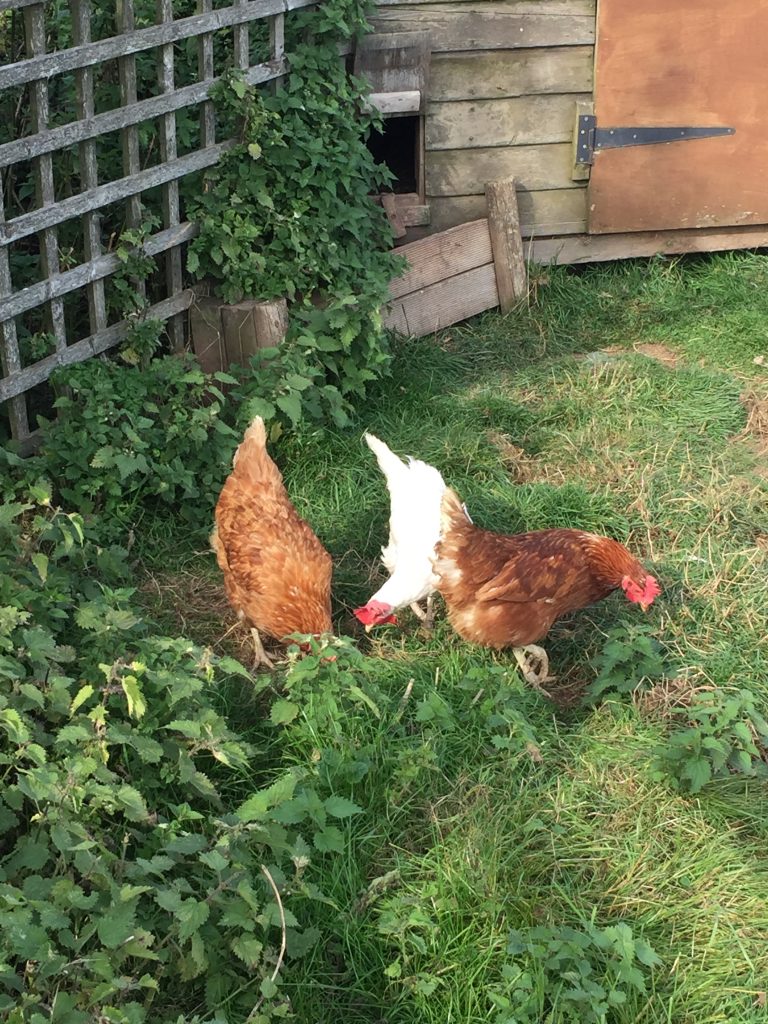
Appearance
Red feathers, hence, the name Red Sex Link, but these feather will molt and are replaced by feather which can be much lighter in color. They may have some light red or white feather around the neck from maturity onwards. They are a single comb chicken with red ears.
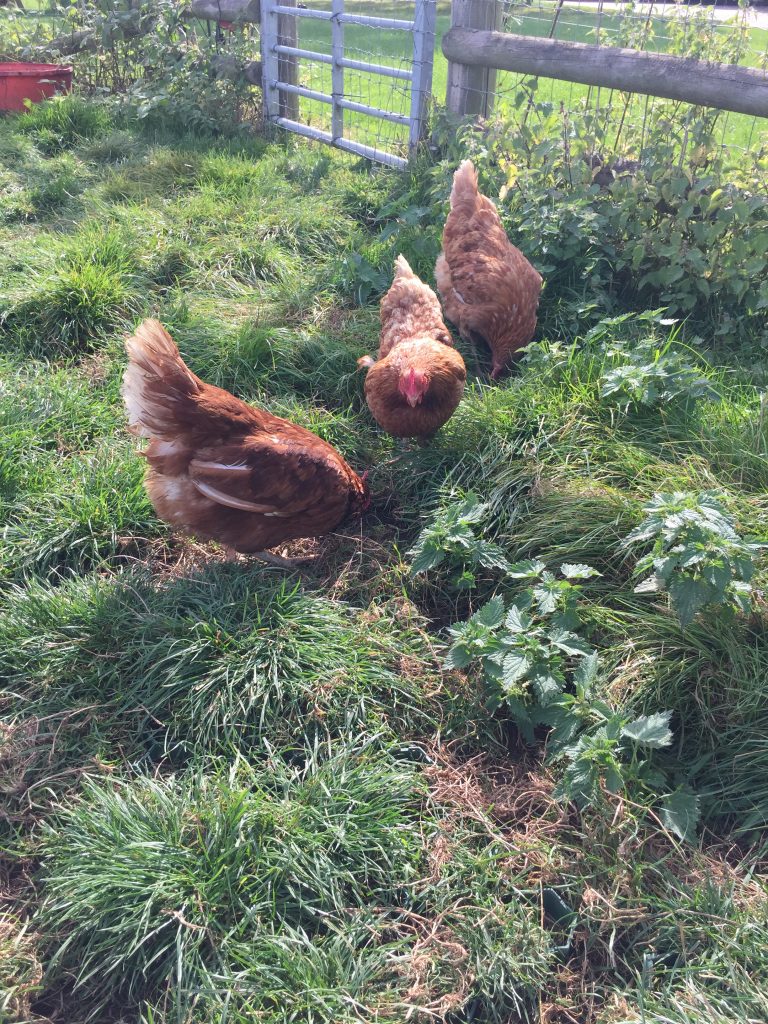
Feeding
What should I feed them?
As chicks from hatching they need to be fed ‘chick crumb’ or ‘starter chick’. It’s the same thing with a different name. Chicks will eat this up until 6 weeks old.
They will at 6 weeks need to be fed growers mash this contains all the nutrients they need to grow and develop. They will begin to grow very quickly at this age. A gentle reminder here is that fresh drinking water should always be available to chickens; no matter what age they are.
Then at around 15 weeks red sex links will need to feed on ‘layers pellets’. The clue is in the name. They now require different nutrients to help them with the production of the eggs they will be laying. All for you! They will eat this until they stop laying eggs towards the end of their lives, and then you can either carry on feeding them this if that’s easier. Or you can switch them onto something else, like a corn mix.
How much should I feed them?
I always have feed available up to maturity or whenever they start to lay eggs. This is because they will regulate themselves how much they want to eat. From maturity onwards you can feed them a set amount weighed out each morning or scatter feed morning and night.
On average a chicken will eat around 2.8 oz (80g) per day. Chickens need grit and so often over looked, don’t get caught out, its for sale here.
What can’t they eat?
This is simple. Chickens can’t eat beans or chocolate. Both can cause chickens to cardiac arrest. You obviously don’t want this, so watch very carefully for what’s in the tables scraps if you are going to feed them scraps. Its in scraps that beans can creep into a chicken’s food, this is the most common way for sure. Dried beans are in fact worse than non-dried but both are deadly, so be very wary.
For the full feeding details scoot over to our chicken feeds page right here.
What do I need to keep chickens?
The three basics, on your shopping list if you want keep red sex links should be:
A coop – well they need somewhere to live! This breed roosts at 2-4ft high. Meaning they will be best in a coop like this one. They are a medium to large size bird so id say 12” width per bird on the roosting bars is sufficient. In winter mine ‘cuddle’ up to keep warm.
A feeder – a metal feeder vs a plastic one is no contest. A metal one will win hands down. Although slightly more than the cheaper, flimsier plastic ones, they last so much longer. Think that chickens will peak each pellet of single piece of corn when they eat. That’s a lot of pecking!
All I found was that they cracked the plastic ones very quickly. Add in that plastic isn’t great in the direct sun, it fades, and will again crack in winter, in the cold. Metal feeders are worth it, trust us we have had ours for decades!
This one is great as it helps prevents the chickens from climbing in, which they will try and do all the time. If they climb in a poop, which again they try and do all the time, the feed is spoiled. Waste of feed and more importantly waste of money. The chickens won’t eat it and it will sit there attracting vermin.
A waterer – well who can live without water! This needs to be placed on flat ground and in the shade. Chickens like cool water. If its placed on flat ground its harder to knock over. If it is knocked over all the water spills out on a hot day for instance and you don’t see it. Very quickly chickens can suffer serous consequences from dehydration.
Metal ones are slightly heavier so less likely to be knocked over. They harder to clean but I feel the trade-off still pays off in the favor of metal ones. Again, our metal one is decades old and still going strong.
And there you have it, your guide to raising red sex link chickens – enjoy your eggs!

